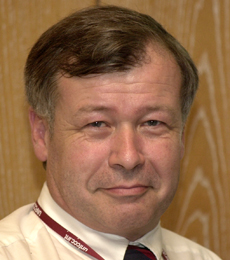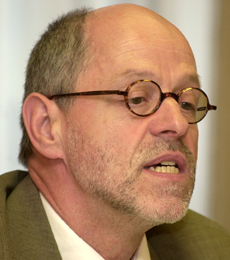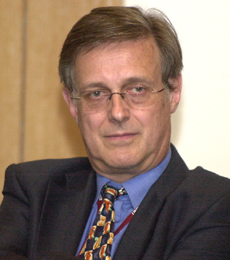 |
||
|
published by IISD, the International Institute for Sustainable Development
in cooperation with the Climate Change Secretariat. |
|||
|
Special Report on Selected Side Events at SB 22
|
|||||
| 19-27 May 2005 | Bonn, Germany | |||||
 |
||||||||||||||||
 |
||||||||||||||||
 |
||||||||||||||||
|
||||||||||||||||
|
Events convened on Monday, 23 May 2005 |
||||||||||||||||
|
|||
|
|||
|
||||||||||||||||||||||||||||||
|
|||
|
Recent analysis from the Annex I expert group Presented by the Organization for Economic Cooperation and Development |
||||||
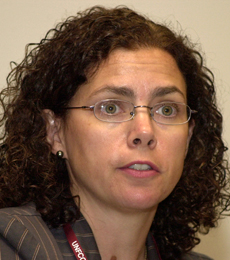 |
Jane Ellis, OECD, outlined: institutional developments; proposed CDM projects and their status; and funding for CDM/JI. She indicated the wide but uneven geographical spread of projects and stated that funding availability has improved significantly.
Martina Bosi, International Energy Agency (IEA), explained that the study “Exploring Options for Sectoral Crediting Mechanisms” (SCMs) focuses on three options: sectoral policies; rate-based sectoral baselines; and fixed sectoral limits. She said all SCMs need baselines and reliable data. She stated that the extent of environmental benefits will depend on the design of the mechanism. Cédric Philibert, IEA, outlined future international cooperation on emissions reductions including quantitative and non-quantitative approaches, indicating that they could involve: fixed binding targets; dynamic binding targets with price caps; technology agreements; and carbon taxes. In considering international energy technology collaboration, he highlighted clean coal technologies in China where technology transfer has occurred through, inter alia, patent acquisitions and the involvement of development banks. Debra Justus, OECD, in outlining the integration of wind power into electricity systems, discussed no-cost supply uncertainties and quick set-up. She said wind electricity generation has grown where research and development have been coupled with supporting policies, and where “push and pull” technologies have been employed for supply and manufacturing. She highlighted lessons learned, including that market-changing policies must engage stakeholders throughout the commercialization chain, and that technology development forms a continuum from research to development. |
|||||
| Noting that SCMs constitute a potential approach to emissions reductions, Martina Bosi, OECD, called for further work on this issue | ||||||
|
|||
|
Beyond Kyoto 2012: A structural evolution of the Kyoto Protocol by a global emission trading scheme Presented by Germany |
|||||
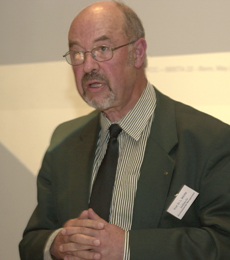 |
Highlighting the need to think beyond Kyoto, Gerhard Spilok, Ministry for the Environment of the State of Baaden-Württemberg, Germany, noted the Global Climate Certificate System (GCCS) as a possible alternative.
Hans-Jochen Luhmann, Wuppertal Institute for Climate, Environment and Energy, underscored the urgent challenge of cutting emissions by 2050 and indicated that global emissions are estimated to increase by 50% by the end of the Kyoto period due to emissions from developing countries and the US. Jörg Dürr-Pucher, German Environmental Aid, said the Kyoto Protocol’s merits include incentives to save energy and develop cleaner technologies. He identified the need for: a global quantified climate sustainability target; the integration of developing countries and the US; and a globally effective economic incentive for companies and governments to reduce emissions. Lutz Wicke, European School of Management, stated that the 550 ppm concentration level requires the GCCS to cap global annual emissions to 30 billion tons from 2013 onwards. He said the GCCS is based on immediate equal per capita distribution allocated to national governments under strict rules. He said the allocation corresponds to the estimated emissions in 2015 but that it necessitates corrections to avoid destroying industrialized countries’ economies. Christoph Böhringer, Centre for European Economic Research, noted that an integrated assessment of long-term emissions abatement strategies shows that the GCCS is economically efficient, and leads to lower carbon concentrations than other scenarios and to an approximate temperature rise of 2.6C. Discussion: Participants discussed adaptation needs and the distribution of benefits from the GCCS among developing countries. They noted that the EU’s 2C target would require a lower cap than the current GCCS proposal. |
||||
| Lutz Wicke, European School of Management, highlighted that the 550 ppm level is the most optimistic goal still achievable and that the global cap and trade system is the only way to accomplish it | |||||
|
|||
|
CC: Forum Presented by the UNFCCC |
|||||
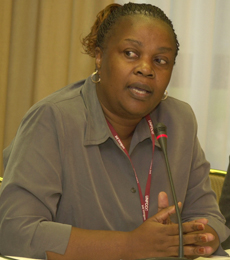 |
June Budhooram, UNFCCC, said the Consultative Group of Experts on National Communications from non-Annex I parties (CGE) is essential for supporting these parties in preparing their national communications. Emily Ojoo-Massawa, CGE, explained that the CGE aims to identify technical problems and assist non-Annex I parties in preparing national communications.
Summarizing the work of the CGE’s thematic group on vulnerability and adaptation, Arthur Rolle, CGE, suggested that based on the success of an April 2005 workshop in Mozambique, more training workshops should be held. On the provisional findings of the thematic group on greenhouse gas inventories, Taka Hiraishi, CGE, said all non-Annex I parties used the Revised 1996 IPCC Guidelines in their first national communications, and many covered a wide range of gases but reported difficulties in obtaining national activity data. Presenting on behalf of the mitigation group of the CGE and Jaekyu Lim, CGE, Festus Luboyera, UNFCCC, noted that: the scope of mitigation reports in national communications varies; technical support and adequate data are essential for mitigation analysis; and the “time horizon” for mitigation assessments should be standardized. Luis Paz Castro, CGE, said the cross-cutting issues thematic group of the CGE plans to prepare a template to assist countries in reporting on such issues, and that many parties consider Article 6 activities on education and training to be important. Discussion: Participants asked questions on: widening the scope of training workshops; choosing a baseline year for non-Annex I national communications; using the IPCC inventories software; and standardizing “time horizons.” One participant suggested the NCSP should work with regional centers to provide technical assistance. |
||||
| Emily Ojoo-Massawa, CGE, outlined the aims of the CGE and its future workplan | |||||
|
|||
|
||
|
Click the above button to go back to our ENB main coverage
|
||
|
|
|
|
|
||
|
